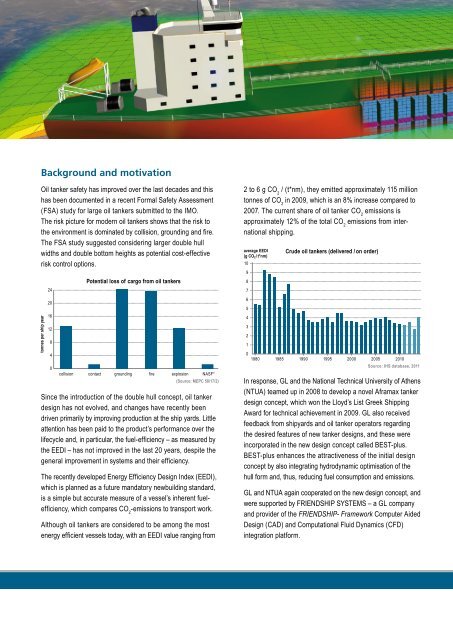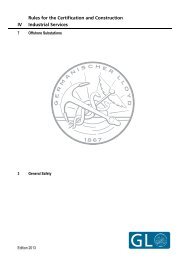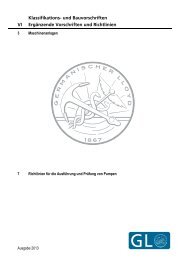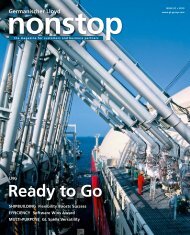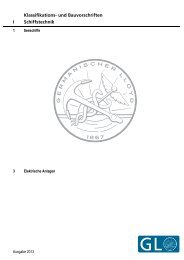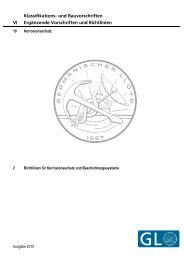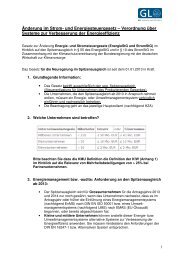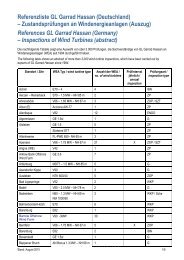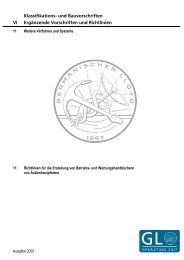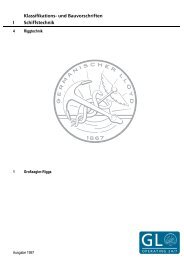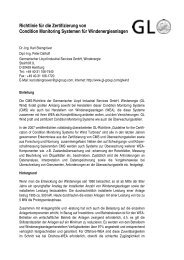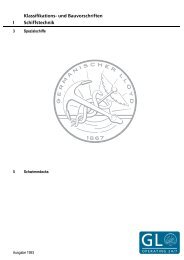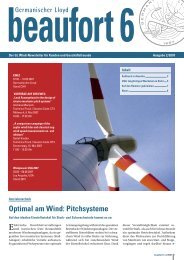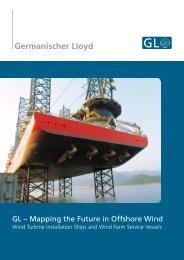A novel Aframax oil tanker design concept - GL Group
A novel Aframax oil tanker design concept - GL Group
A novel Aframax oil tanker design concept - GL Group
Create successful ePaper yourself
Turn your PDF publications into a flip-book with our unique Google optimized e-Paper software.
Background and motivation<br />
Oil <strong>tanker</strong> safety has improved over the last decades and this<br />
has been documented in a recent Formal Safety Assessment<br />
(FSA) study for large <strong>oil</strong> <strong>tanker</strong>s submitted to the IMO.<br />
The risk picture for modern <strong>oil</strong> <strong>tanker</strong>s shows that the risk to<br />
the environment is dominated by collision, grounding and fire.<br />
The FSA study suggested considering larger double hull<br />
widths and double bottom heights as potential cost-effective<br />
risk control options.<br />
tonnes per ship year<br />
24<br />
20<br />
16<br />
12<br />
8<br />
4<br />
0<br />
Potential loss of cargo from <strong>oil</strong> <strong>tanker</strong>s<br />
collision contact grounding fire explosion NASF*<br />
(Source: MEPC 58/17/2)<br />
Since the introduction of the double hull <strong>concept</strong>, <strong>oil</strong> <strong>tanker</strong><br />
<strong>design</strong> has not evolved, and changes have recently been<br />
driven primarily by improving production at the ship yards. Little<br />
attention has been paid to the product’s performance over the<br />
lifecycle and, in particular, the fuel-efficiency – as measured by<br />
the EEDI – has not improved in the last 20 years, despite the<br />
general improvement in systems and their efficiency.<br />
The recently developed Energy Efficiency Design Index (EEDI),<br />
which is planned as a future mandatory newbuilding standard,<br />
is a simple but accurate measure of a vessel’s inherent fuelefficiency,<br />
which compares CO 2 -emissions to transport work.<br />
Although <strong>oil</strong> <strong>tanker</strong>s are considered to be among the most<br />
energy efficient vessels today, with an EEDI value ranging from<br />
2 to 6 g CO 2 / (t*nm), they emitted approximately 115 million<br />
tonnes of CO 2 in 2009, which is an 8% increase compared to<br />
2007. The current share of <strong>oil</strong> <strong>tanker</strong> CO 2 emissions is<br />
approximately 12% of the total CO 2 emissions from inter-<br />
national shipping.<br />
average EEDI<br />
(g CO2 / t*nm)<br />
10<br />
9<br />
8<br />
7<br />
6<br />
5<br />
4<br />
3<br />
2<br />
1<br />
0<br />
1980<br />
Crude <strong>oil</strong> <strong>tanker</strong>s (delivered / on order)<br />
1985 1990 1995 2000 2005 2010<br />
Source: IHS database, 2011<br />
In response, <strong>GL</strong> and the National Technical University of Athens<br />
(NTUA) teamed up in 2008 to develop a <strong>novel</strong> <strong>Aframax</strong> <strong>tanker</strong><br />
<strong>design</strong> <strong>concept</strong>, which won the Lloyd’s List Greek Shipping<br />
Award for technical achievement in 2009. <strong>GL</strong> also received<br />
feedback from shipyards and <strong>oil</strong> <strong>tanker</strong> operators regarding<br />
the desired features of new <strong>tanker</strong> <strong>design</strong>s, and these were<br />
incorporated in the new <strong>design</strong> <strong>concept</strong> called BEST-plus.<br />
BEST-plus enhances the attractiveness of the initial <strong>design</strong><br />
<strong>concept</strong> by also integrating hydrodynamic optimisation of the<br />
hull form and, thus, reducing fuel consumption and emissions.<br />
<strong>GL</strong> and NTUA again cooperated on the new <strong>design</strong> <strong>concept</strong>, and<br />
were supported by FRIENDSHIP SYSTEMS – a <strong>GL</strong> company<br />
and provider of the FRIENDSHIP- Framework Computer Aided<br />
Design (CAD) and Computational Fluid Dynamics (CFD)<br />
integration platform.


